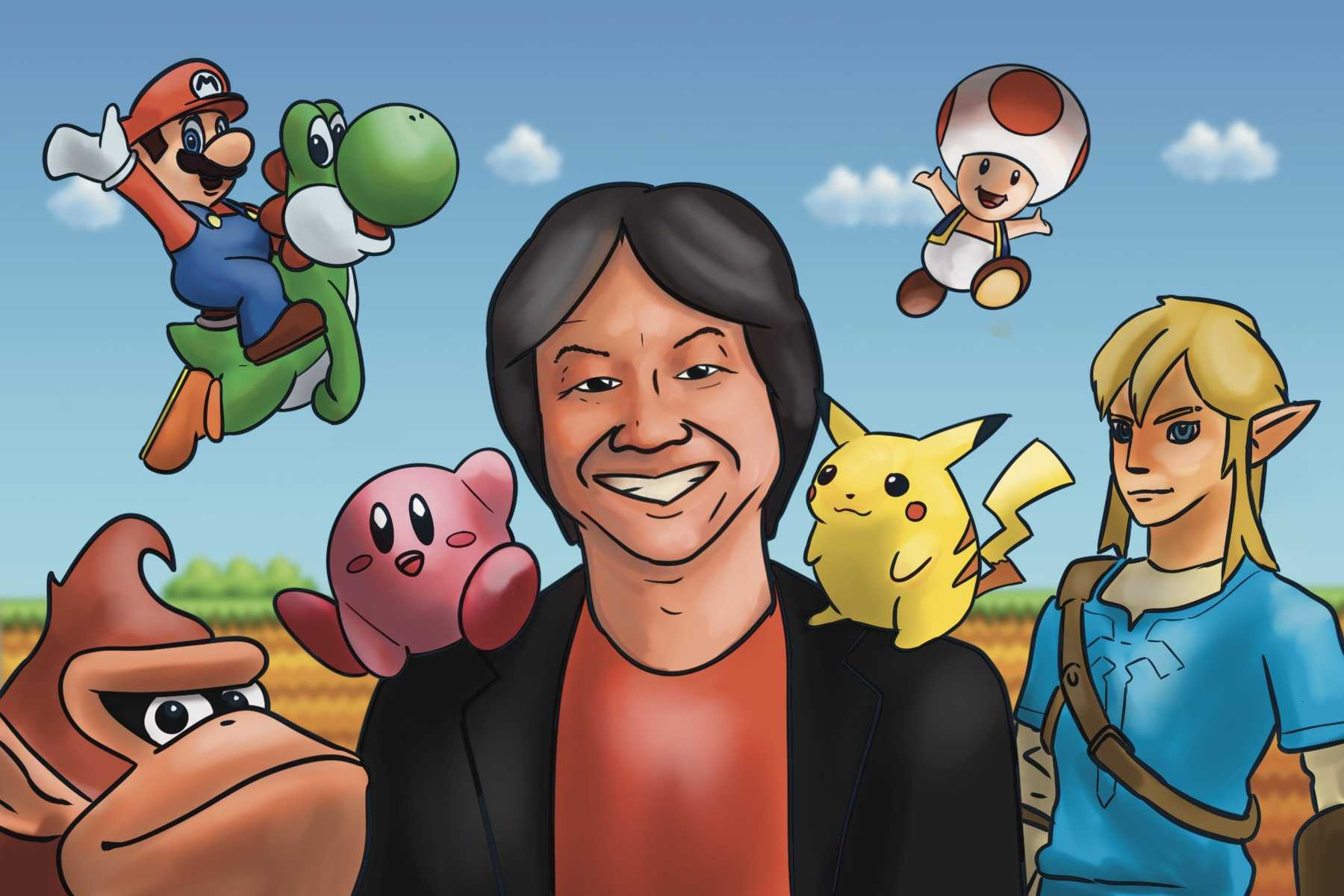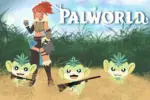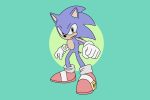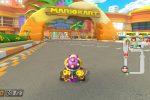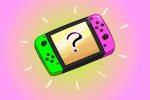Starting in 1978, many video game companies found success in creating and globalizing arcade video games. Atari made “Space Invaders,” which ushered in the golden age of arcade video games. The game allows players to control a spaceship and shoot bullets at waves of approaching aliens. Two years later, Namco created “Pacman,” where players navigate the titular yellow character through mazes while eating dots and avoiding four technicolor ghosts. Both arcade games continue to attract many people due to their fun, interactive gameplay and 8-bit character designs.
Nintendo’s first foray into arcade video games was less promising. Following the success of “Space Invaders,” the company made its own shoot ‘em up game called “Radar Scope.” It achieved minor success in Japan, but failed commercially in the United States. As a result, the newly founded Nintendo of America company fell into a financial crisis. Their warehouse filled up with 2,000 unsold units of “Radar Scope.” In response, the Nintendo of America president, Minoru Arakawa, requested that the company’s main overseas CEO, Hiroshi Yamauchi, convert these machines into a new game in Japan. At the time, many employees were unavailable to design a new game on short notice. Eventually, Yamauchi assigned this task to first-time video game designer Shigeru Miyamoto, who was inspired to become a video game designer after enjoying “Space Invaders.” Miyamoto was under enormous pressure to succeed; the company was relying on him to save them from bankruptcy.
In order to complete the game, Miyamoto isolated himself in his office with his team and engineer Gunpei Yokoi. Luckily, the headquarters had a bathtub for the employees to rest in, which Miyamoto utilized to think about his ideas for the new game. Initially, Miyamoto expressed interest in adapting Popeye characters to his arcade game, but Nintendo failed to gain the licensing rights. However, the video game designer imitated the love triangle between Popeye, Olive Oyl and Bluto with his new characters. He settled on creating a gorilla, a plumber and the plumber’s girlfriend. Four to five months later, Miyamoto finally completed the project and named it after the gorilla, “Donkey Kong,” in 1981. In the game, the player controls the plumber and has to climb up platforms and jump over barrels and moving fireballs to save his girlfriend from Donkey Kong. The game sold up to 60,000 machines in the United States. These sales exceeded Nintendo’s expectations and allowed Miyamoto to make a name for himself.
Miyamoto’s success with Donkey Kong led to the creation of two sequels: Donkey Kong Jr. and Donkey Kong 3. In 1983 Miyamoto also made the spin-off Mario Bros. which expanded on the plumber’s origin story. Miyamoto went from calling the plumber “Mr.Video” to “Jumpman” before finally naming the character after Nintendo’s landlord, Mario Seageal, who was demanding that the company pay off their overdue rent at that time. In addition, the arcade game introduced Mario’s brother, Luigi. In contrast to “Donkey Kong’s” gameplay, “Mario Bros.” focused on a two-player co-op. The player’s goal was to kick their enemies off the game’s platforms while more enemies emerged out of green sewer pipes. Two years later, Mario made another appearance in his own game on one of Nintendo’s first home consoles, the Nintendo Entertainment System (NES).
A few months after the console debut, Super Mario Bros. was released for the system on Sept. 13, 1985. The game introduced a variety of new elements for the player to explore as Mario. The story follows Mario’s journey to save Princess Peach from Bowser in the Mushroom Kingdom. Along the way, the character must defeat Bowser’s minions by jumping on them or hopping over floating platforms to avoid their attacks. Mario can grow bigger by consuming a red mushroom, or he can gain the ability to throw fireballs by acquiring a special flower. The player acquires these skills by hitting the gold question blocks above the items. Players can also collect gold coins through the 2D platform course. If a player reaches 100 gold coins, then Mario gains a “1-Up” life. As for Bowser’s minions, they are arranged in a variety of designs. Koopas are cute but deadly turtles that are either green or red. If Mario runs into these creatures without jumping on them or avoiding their oncoming shells, he dies and it’s an instant game over for the player. This fate also applies to the two-legged brown mushrooms, known as goombas. On the other hand, Princess Peach’s minions are adorable humanoid mushroom characters called Toads. They can either aid Mario’s quest by giving him mushrooms or annoy him by saying “our princess is in another castle,” after Mario completes a level’s final stage.
The world-building and gameplay of the Nintendo franchise attracted many players across the globe. In 1990, Mario was more recognizable to children than Walt Disney’s Mickey Mouse. By April 2000, the game had sold up to 40.23 million copies and had become the highest-grossing video game of all time. This high-level success prompted Miyamoto to make two sequels, Super Mario Bros. 2 and Super Mario Bros. 3. Both games expanded the Mushroom Kingdom by introducing new characters and special items. Besides that, Miyamoto adapted the gameplay and the Mushroom Kingdom onto a 3D platform in Super Mario 64 on the Nintendo 64. The Mushroom Kingdom world was also converted into a kart racing format in Super Mario Kart on the Super Nintendo Entertainment System (SNES). As time progressed, Miyamoto moved away from game development and dedicated more time to bringing his creations to life in the real world.
On May 7, 2015, Universal Studios announced a partnership with Nintendo to make themed attractions based on their IP, especially Mario. Universal Parks revealed the concept art of the land, where people can explore the Mushroom Kingdom. Later, they named the land Super Nintendo World. Guests can play a real-life version of Mario’s game: They can go inside Peach’s Castle, hit golden question blocks and race against Bowser and his minions in his castle. Miyamoto was involved with the land’s design and construction. Super Nintendo World opened in Universal Studios Japan in 2021 and Universal Studios Hollywood in early 2023. Miyamoto was also interested in adapting Mario for the big screen again, despite the disturbing live-action version that was created in the 1990s. After he negotiated with Illumination Entertainment CEO Christopher Meledrandri on the film, the development of the project was officially announced in 2018. The film, which is officially titled “The Super Mario Bros. Movie,” stars Chris Pratt as the titular character and came out in April of 2023. Miyamoto continues to share his love for his creation through new game installments and different mediums. He is an iconic creator that the world will never forget.


